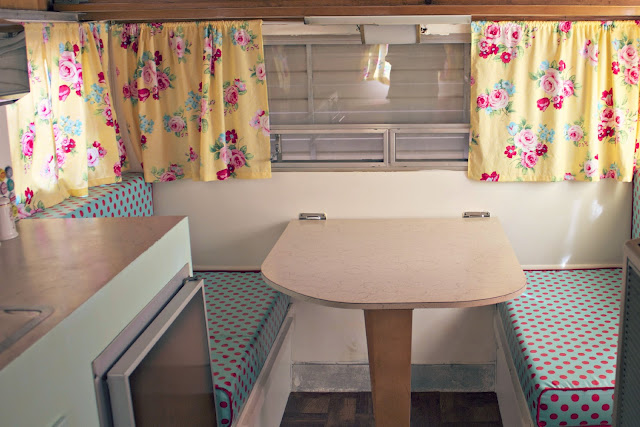Great Renovation Tips to Help Tackle Flipping Projects
Sourced from: http://www.ccr-mag.com/great-renovation-tips-for-helping-you-tackle-your-flipping-project/

Blue living room interior with a gray sofa during renovation process. Unfinished floor, boxes and a ladder in the corner. 3d rendering mock up
Flipped homes represented 5.6% of home and condo sales in 2018 with 207,957 houses fitting into that category. The average gross profit of flipped home sales was $65,000.
But not all house flippers come out ahead when they sell. Going over budget, taking on too making projects, or overestimating your experience and skills can cut into your profits.
Making smart renovation choices increases your chances of making high profits on your project. Renovation tips to keep the project on time and on budget help guide your decisions.
Keep reading to learn ways to renovate your flipped house to improve your results.
Know When to DIY and When to Contract
The DIY route seems like the cheapest way to renovate when house flipping, but it can cost you more in the long run. If you don’t know what you’re doing, you’re more likely to make a mistake.
That mistake may force you to buy new materials or eventually hire a professional to do the work anyway. Your mistake could also cause damage to other parts of the home that force more repairs and renovations.
Taking on jobs outside your expertise also takes longer to complete. It can delay other projects and extend the timeline of the flip. That extended timeline costs you money because it means a delayed sale.
Hiring professional contractors for specialized renovations costs you more in labor. That extra money may be well spent by keeping the project on time. You also get the work done correctly the first time.
When planning your project, be realistic about your abilities. Identify the jobs you can handle yourself and the ones you need to hire contractors to complete. Start looking for contractors immediately to ensure you find someone who’s qualified and available when you need the work done.
Ensure Structural Stability First
Interior finishes and cosmetic work make the house come together. Those are the things potential buyers notice and can make or break the flip. But it’s a smarter decision to make sure the house is sound first.
Starting with the structural integrity prevents additional problems and protects the work you do inside the home. If you start refinishing and painting walls to find out you have leaking issues, you’ll have to redo that work.
A professional home inspection helps you identify those structural issues. Ensure they’re fixed properly before you move inside to work.
Keep the Buyer in Mind
Home renovations for a house flip are different than your personal renovations because the finished product isn’t for you. It doesn’t matter what your tastes are if they don’t match up to the people who’ll likely buy your flipped home.
Consider the location, price range, size, and style of the home to anticipate the type of buyer. A small starter home in an older neighborhood isn’t going to attract the same type of buyer as a larger home in a more affluent part of town.
Buyers of a lower-priced home won’t likely expect or want to pay for high-end finishes. Buyers in a more upscale neighborhood expect those better finishes. Make design decisions based on who might buy it.
Create a File of Specs
Organization is essential to keep your flipping project on time and budget. When you’re remodeling the entire home, you’ll have lots of finishes, materials, dimensions, and other specs to track.
Create a central spreadsheet or file to contain that information. This becomes a quick reference when you need those details. It comes in handy if you need to reorder materials or make sure you’re using the correct materials in each space.
Be Specific in Your Plan
Before you start any work, decide on the scope of the renovations. Write down a specific plan for everything you want to change.
If you hire contractors to help with the work, make sure they know exactly what you want to be done and how you want it done. This is especially important for detail work, such as tiling.
If you hire someone to help with demo, make it clear which items you want to be removed and which you want to keep. Maybe an older home has old wood floors or tin ceiling tiles you want to keep and refinish. Communicate those plans to the demo crew so they don’t destroy them.
Focus on Kitchens and Bathrooms
Kitchens and baths get a lot of attention from potential buyers. A home that has the buyer’s preferred style of kitchen is extremely or very important to 58% of buyers.
Outdated kitchens and bathroom stand out when people view homes. Buyers know it’s not cheap to renovate a kitchen or bathroom. Having the work done for them makes the home more appealing because they won’t have to shell out more money after making a major home purchase just to make the kitchen or bathroom decent.
Avoid Too Much Improvement
Making a good first impression attracts buyers, but going too high-end can hurt your profits. The cost of those materials cuts into your flipping budget. You won’t likely recoup those costs in the sale price.
Choose a few high-end pieces can make the overall home look more upscale. Pick cost-effective pieces for this strategy. A stainless steel wall-mounted hood vent is relatively inexpensive, but it creates a high-end feel in the kitchen that makes it stand out.
Choose Lasting Materials
Even though you don’t want to over-improve your flipped home, you want to use materials that last. Buyers will notice cheap, low-quality materials. It may look okay for the open house, but potential buyers may pass on the home if they feel the finishes won’t last.
Learning about different materials and choosing the ones that work best for you helps you make those buying decisions. Learning about teflon polymer and its use in paints, bolt coatings, and other uses may influence your decision on material purchases, for example.
Follow These Renovation Tips
What are your favorite renovation tips for flipping a house? The goal is to make the house appealing to buyers while keeping your costs low for a quick sale and maximum profit.
Check out our past issues for more construction advice and information.























